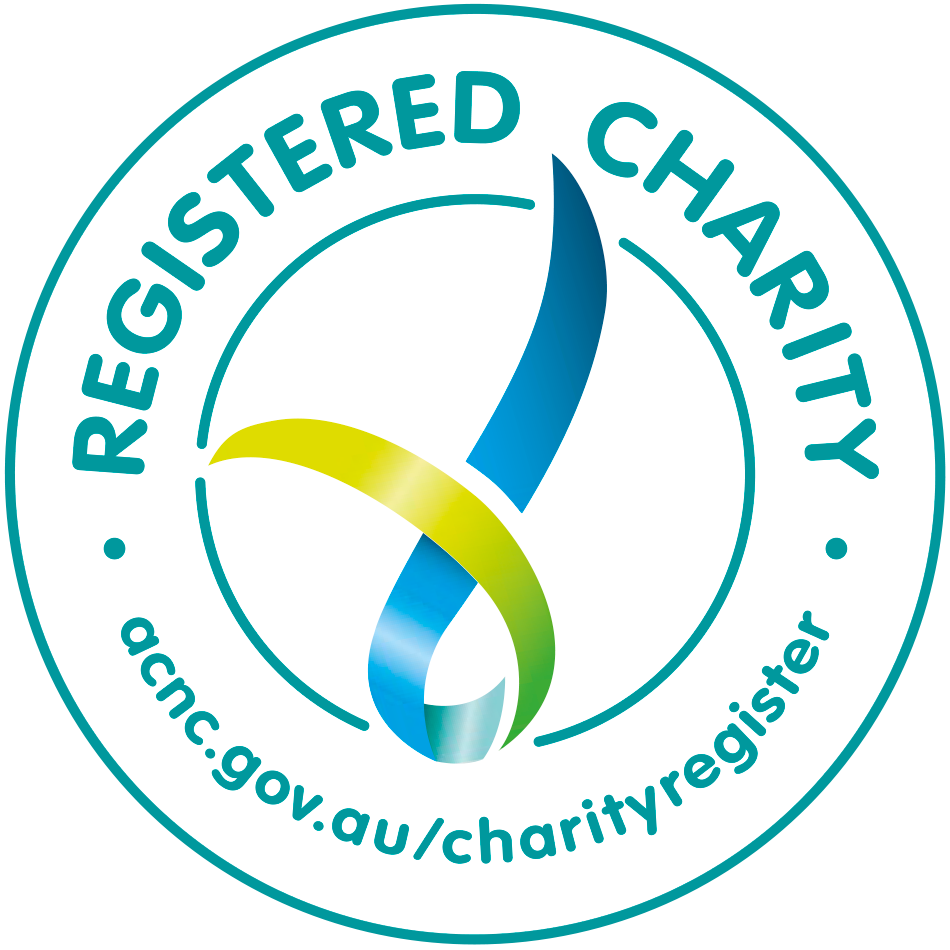
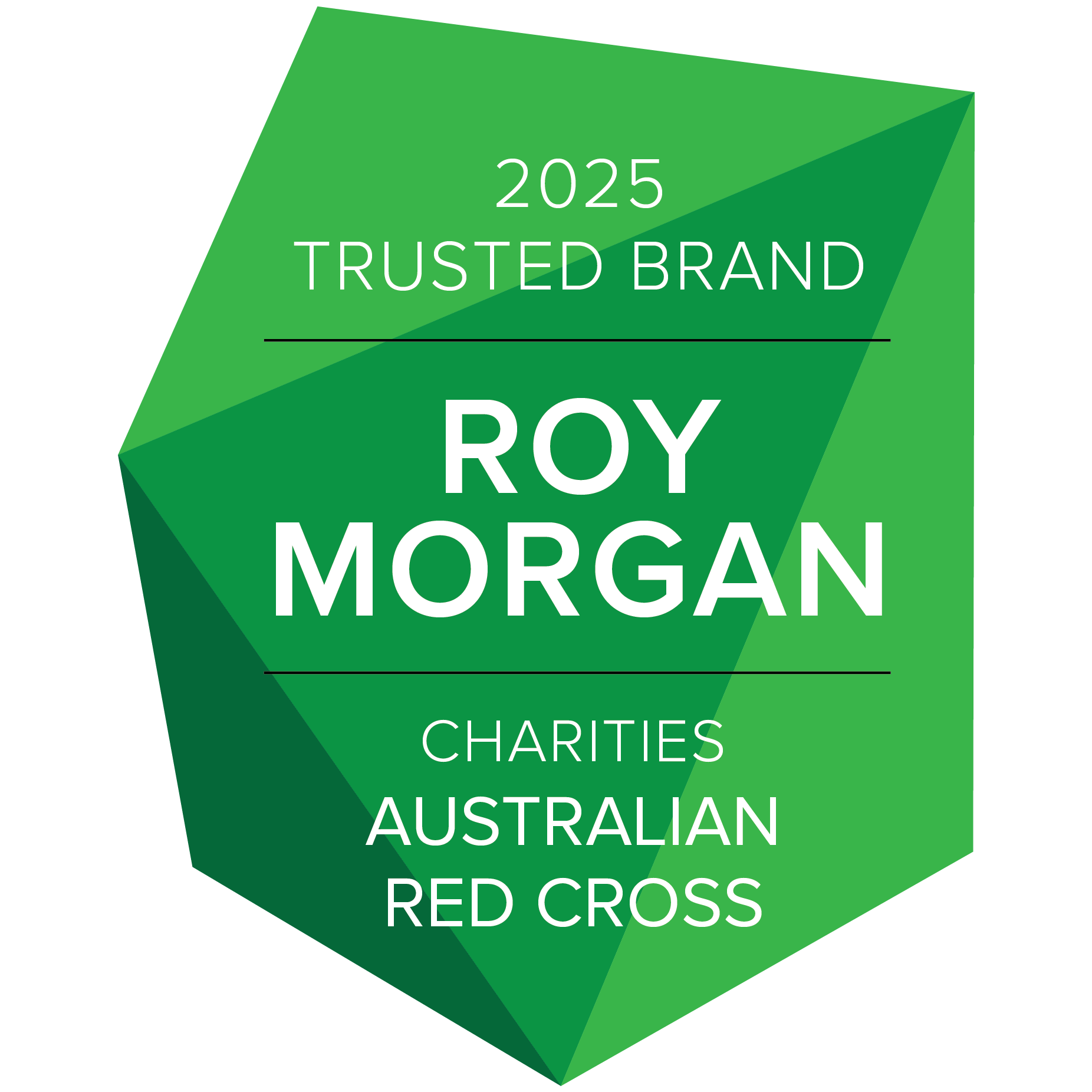
In August 2025, when Jean-Philippe (JP) Miller arrived for his fourth rotation at the Red Cross Field Hospital in Rafah, Southern Gaza, things looked different. Due to a recent increase in mass casualty incidents nearby, several new security measures had been introduced around the wards and hospital grounds.
“There’s been a lot of passive and active security measures taken since I was last here at the end of April, like these reinforced concrete walls that have been put up around the tents to try and make it safer for us,” explains JP, in a video diary recorded during his time at the hospital. “When bullets are flying about, the staff and patients have somewhere they can reside in safety until the hostilities settle,” he adds, as he walks through a safety bunker with a roof made of sandbags.
“The hospital is a 60-bed hospital, but because of the increased needs, we’ve expanded to 120 beds. We’ve had to employ some additional nurses to try and cope with the needs, and our surgical team is working around the clock as well. So, a very different context to last time. Probably the worst I’ve seen it in Gaza.”
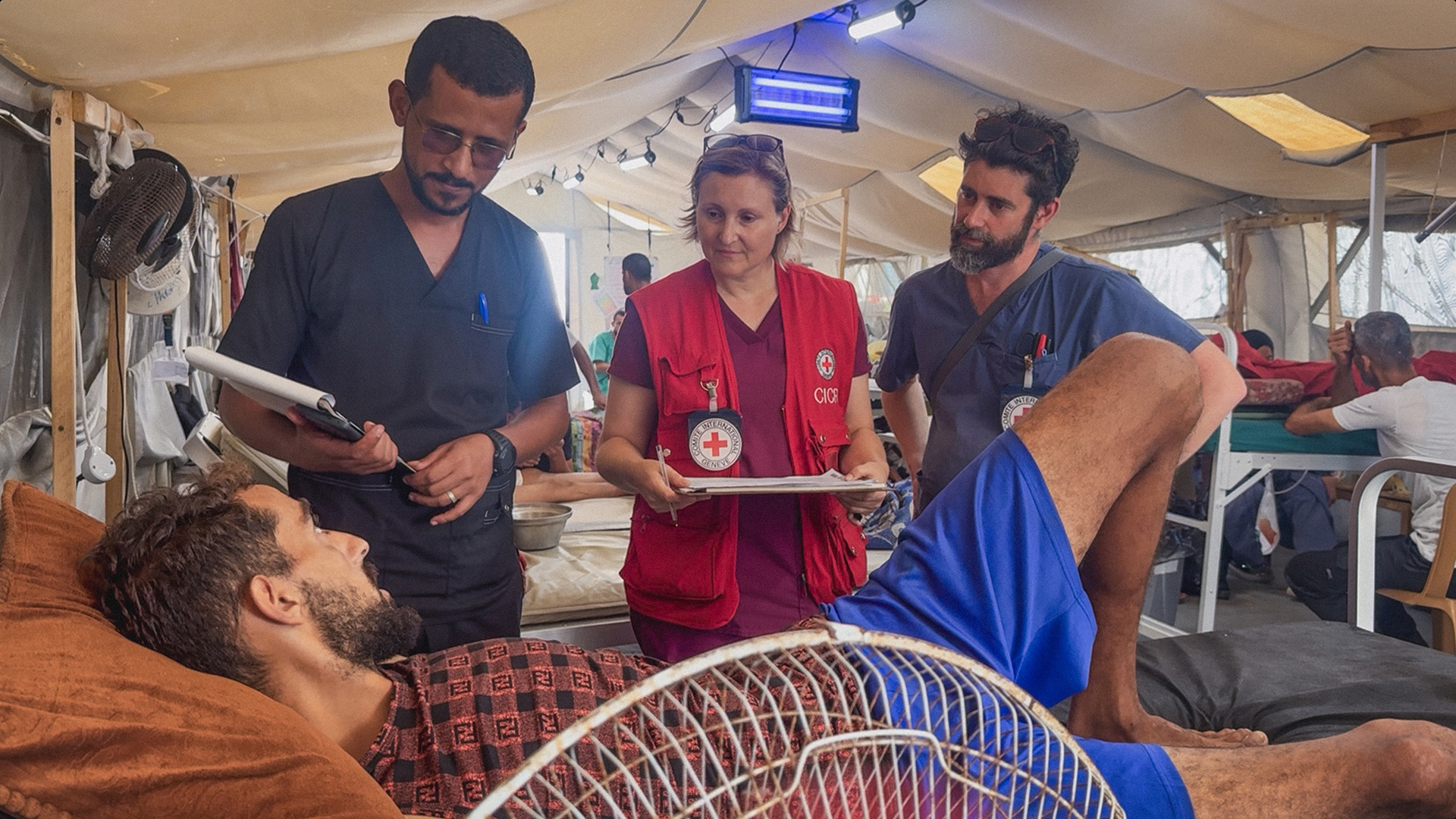
JP is one of many humanitarian workers currently putting their safety on the line to help local teams care for people caught in areas of conflict all over the world. Having spent the last decade deploying into places including South Sudan, Bangladesh, Syria and Myanmar with Australian Red Cross, he is now supporting local colleagues in Gaza at a time when humanitarian needs in the region are surging, yet attacks that threaten the safety and security of humanitarian workers are occurring more frequently than ever before.
2024 was the deadliest year on record for humanitarian personnel, with 385 killed while working in areas of conflict around the world*. Many were local staff and volunteers, their lives taken while helping the very communities they come from.
Sadly, 2025 is shaping up to be worse, as international humanitarian law — which protects those not taking part in the fight — continues to be violated in conflicts across the globe.
“The scary thing about Gaza — and many other places around the world at the moment — is that we're seeing a breakdown of that protection, and a breakdown of respect for IHL,” said JP shortly after his third deployment to Gaza in May 2025. “We're seeing attacks on aid workers, and attacks on medical facilities."
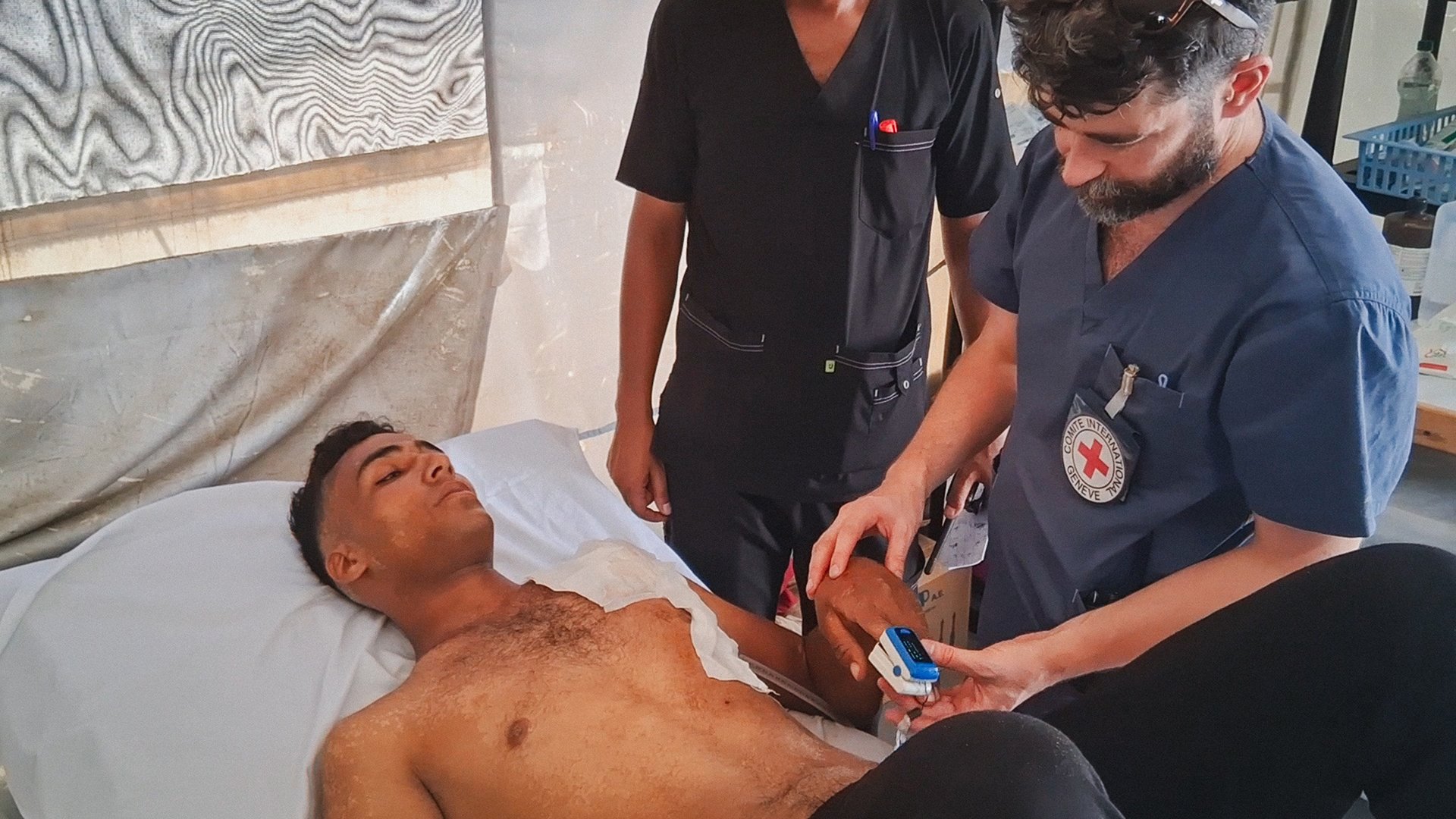
Humanitarian workers must be protected so that they can continue to provide critical care and support to those whose lives have been turned upside down by conflict. Without the specialist support of local and international humanitarian personnel, the sick and wounded can’t receive the medical attention they require. Essential hospital equipment will go unrepaired. Vital nutrition can’t receive those who desperately need it.
It’s for this reason the Declaration for the Protection of Humanitarian Personnel was launched at the United Nations in New York in September. Announced by Australian Foreign Minister Penny Wong alongside global leaders and humanitarian organisations including the International Committee of the Red Cross (ICRC) and the International Federation of Red Cross and Red Crescent Societies (IFRC), the Declaration forms a commitment to improving the safety and security of humanitarian personnel at the highest political level, while setting out actionable steps countries can take to protect humanitarian workers in conflict zones.
“Humanitarian workers are not targets. They are lifelines,” wrote Andrew Colvin, Australian Red Cross Chief Executive Officer, at the time of the Declaration’s launch. “If humanitarian personnel cannot operate safely, the consequences for millions of people caught in conflict will be devastating.”
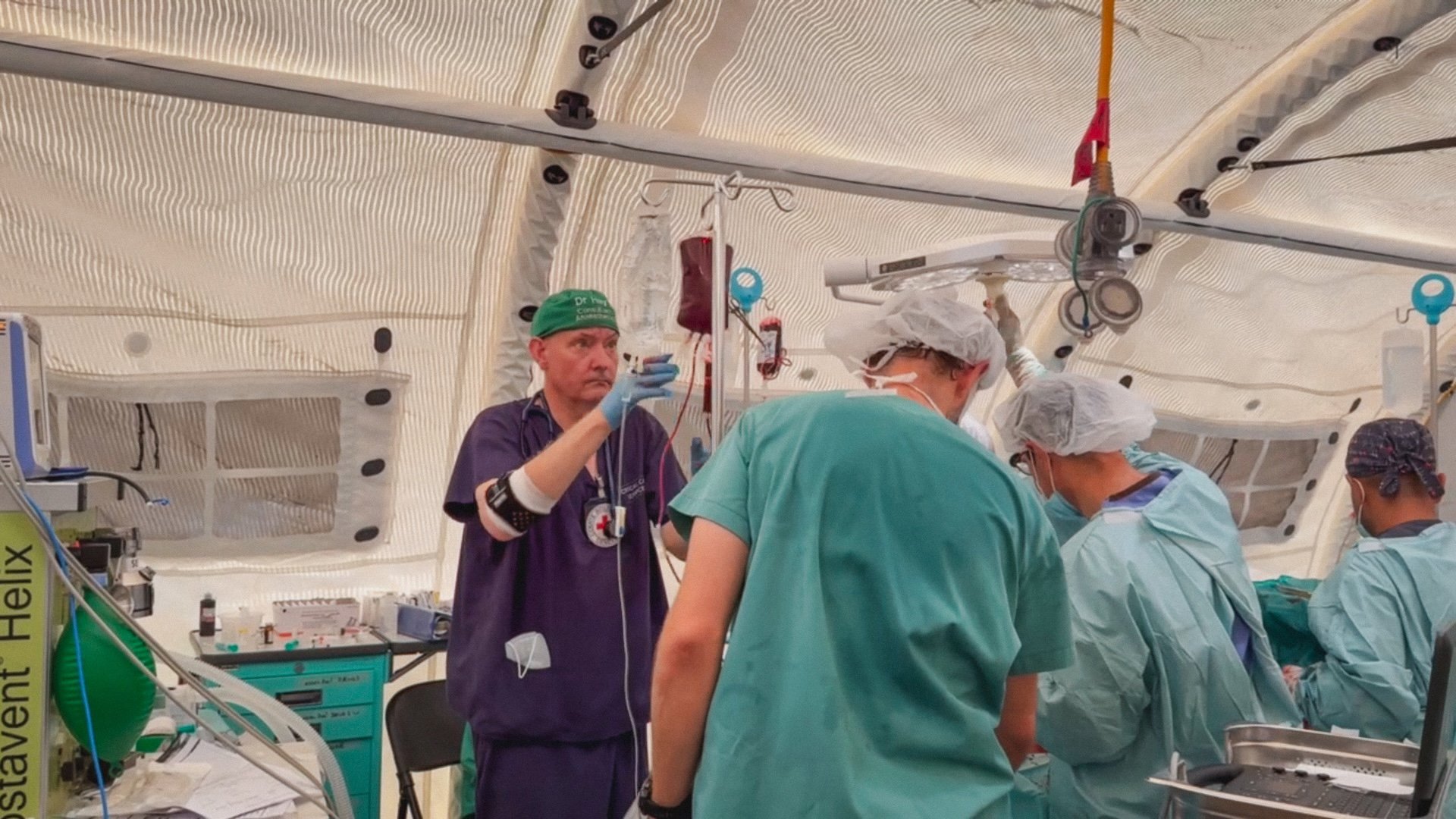
On the ground in Gaza, JP is committed to being there for those people. "Being able to help people feel safer when it is dangerous is incredibly valuable,” he says.
During this deployment, there’s been a dramatic rise in the number of patients that are presenting with signs of malnutrition. “The food situation here remains quite dire. The prices in the market are extremely high and prohibitive to many,” says JP in another video diary, as he explains the Mid Upper Arm Circumference measure (MUAC), which helps hospital teams to identify the severity of malnutrition in children and adults.
“This is really worrying for us because we know that [malnourishment] delays recovery, and we know that it increases the risk of complications for these patients. Simply put, our patients that are arriving malnourished, they’re staying in hospital longer and they're having poorer outcomes.”
Sadly, many of these patients are children, and many of them have been injured while trying to access food. Since May this year, 11 out of 13 mass casualty incidents were linked to an aid distribution site located two kilometres from the Field Hospital. According to medics, over a third of the patients injured in these incidents were younger than 18.
“The hardest thing — the most distressing thing — is seeing children who are injured,” says JP. “We’ve had children with gunshot wounds, with shrapnel injuries, with blast injuries, children who have lost their parents, and they’re calling out for their dead parents in our hospital... It’s confronting work.”
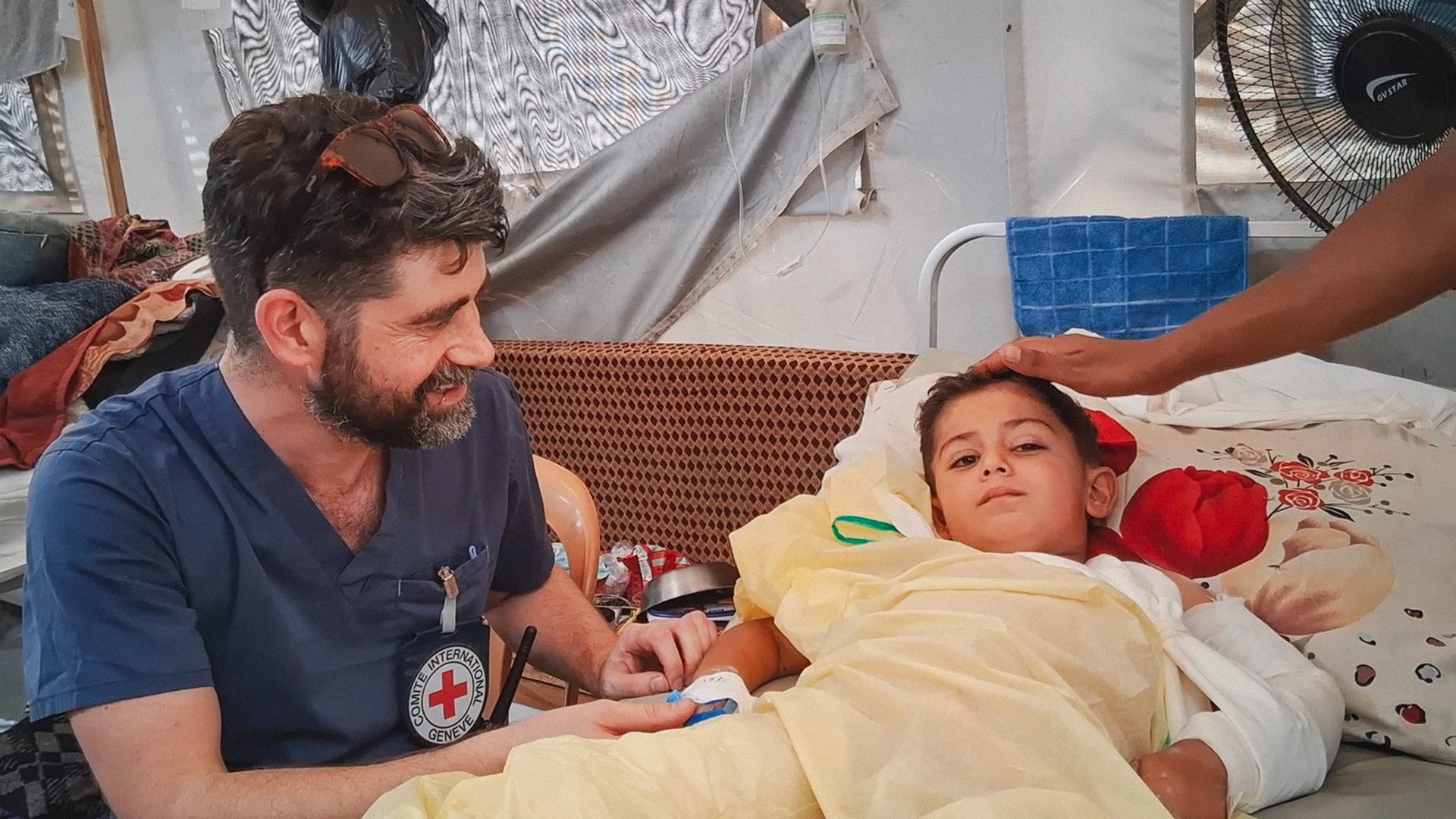
“Despite all the pain and suffering… there are some moments of hope”
But even in areas of conflict where conditions continue to deteriorate, miracles that demonstrate the power of humanity, and humanitarian care, still happen.
“Not long after I arrived at the Field Hospital, there was a male patient who arrived with some horrific injuries from a gunshot,” says JP as he walks through one of the hospital’s wards. “His recovery has been complicated by severe infection; he's had to undergo multiple surgeries, and he's still yet to be discharged. But every day whilst he's been an inpatient, his pregnant wife and his young child have been by his side.
“Now, overnight, something quite miraculous has happened. His pregnant wife gave birth to a baby boy just 20 metres away in our maternity department,” JP continues, as he pans his camera to the family, who are gathered around their father’s bed, the newborn son in his fragile arms.
“It's really a moment that despite all the pain and suffering we do see here in Gaza, there are some moments of hope and joy.”
JP acknowledges that for those who are far away, it can be “very easy to get lost in the numbers”. But behind every death, injury and displacement is a human being with a story.
“Really, the people here are ordinary people in extremely, extraordinarily difficult circumstances. These are people that had hopes and dreams, they had jobs and families—I mean, these people have lost everything. They’ve lost their homes; they’ve lost their loved ones.
“Every day at the hospital I hear about a colleague that’s lost someone. They’ve all been displaced, they’re living in tents, they don’t have electricity, there’s a daily challenge of just trying to get fresh water or food or maintain hygiene—it’s a nightmare for them.
“What their dream is, is a life without war. Safety for their children, to live with dignity, to live normal lives.”
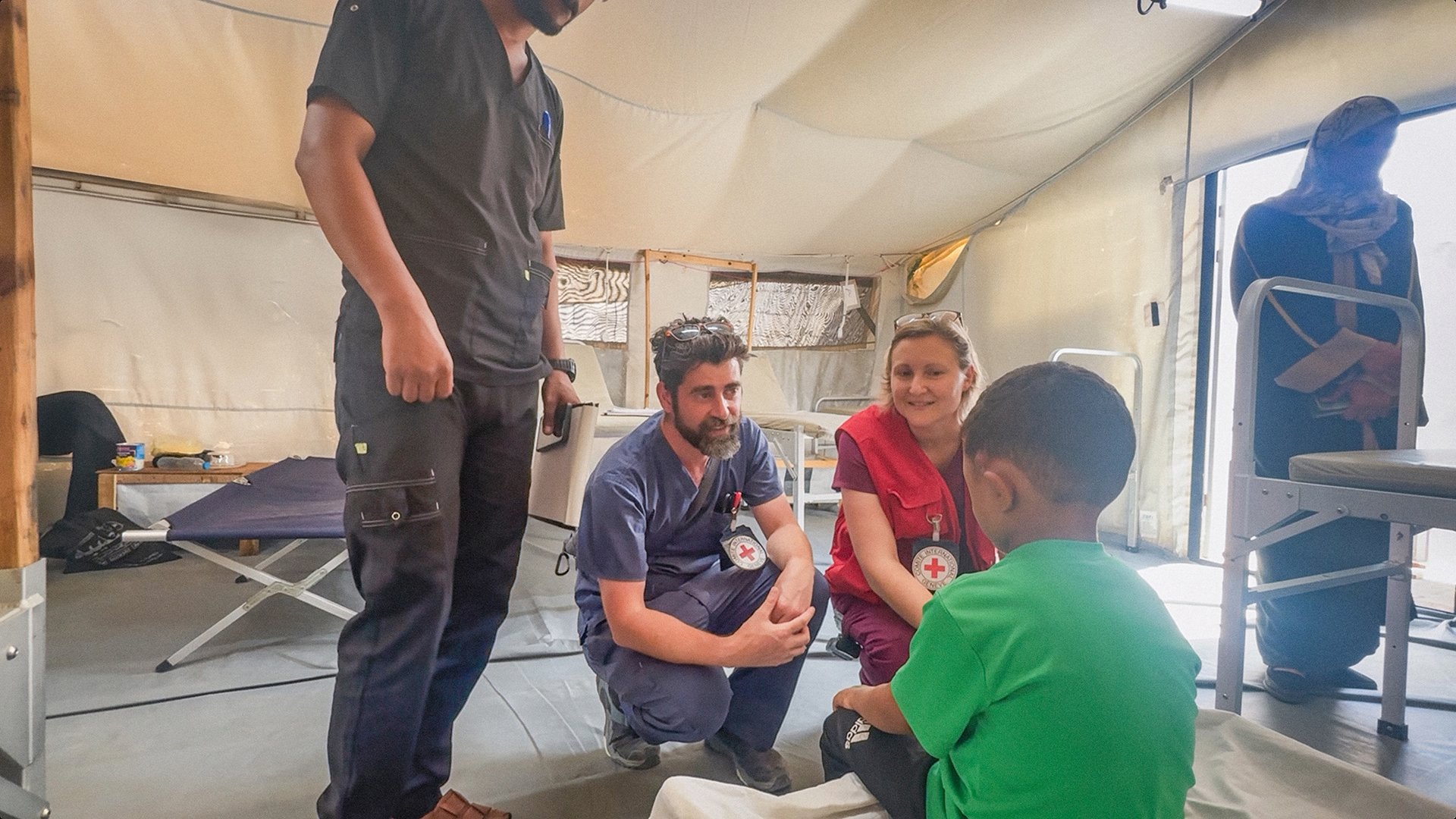
*Current statistics by Aid Worker Security Database
Red Cross pays our respects to the Aboriginal and Torres Strait Islander custodians of the country where we work, and to Elders, past, present and emerging.
Learn about our Reconciliation Action Plan and how we can all make reconciliation real.
This website may contain the images, voices or names of people who have passed away.


© Australian Red Cross 2025. ABN 50 169 561 394
